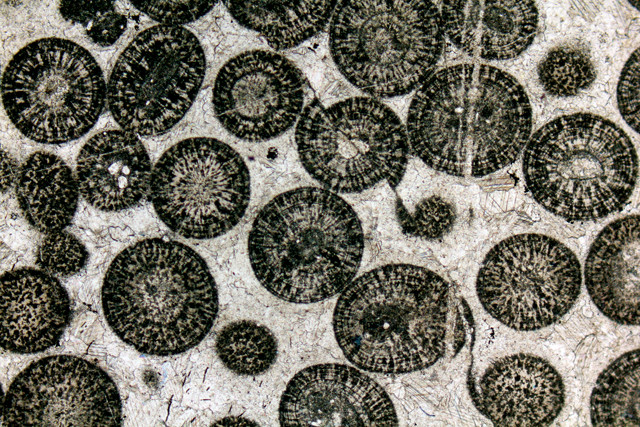
by Sarah Derouin Wednesday, October 18, 2017

A thin section of ooids showing their concentric carbonate coatings. Credit: Strekeisen, CC BY-SA 4.0.
The formation of carbonate spheroids called ooids is a bit of a mystery. They are thought to form in warm waters saturated with carbonate, which combines with calcium to form concentric layers of calcium carbonate on shell fragments or sand grains. Some scientists have suggested that the presence of microbes might encourage calcium carbonate to precipitate out of water to form ooids in a process called organomineralization.
In a new study in Geology, researchers led by Mara Diaz of the University of Miami report evidence for the biologically influenced formation of ooids. Using scanning electron microscopy and thin sections to examine ooids from five locations around the Bahamas, ranging from tidal bars to beaches, the team discovered signs of biological activity, including the presence of microbial biofilms and amorphous carbonate phases that appear to precede the formation of mineralized ooid coatings. The researchers concluded that microbially driven mineralization acted in tandem with abiotic environmental and chemical factors to create the tiny carbonate spheres in all their test site samples.
© 2008-2021. All rights reserved. Any copying, redistribution or retransmission of any of the contents of this service without the expressed written permission of the American Geosciences Institute is expressly prohibited. Click here for all copyright requests.